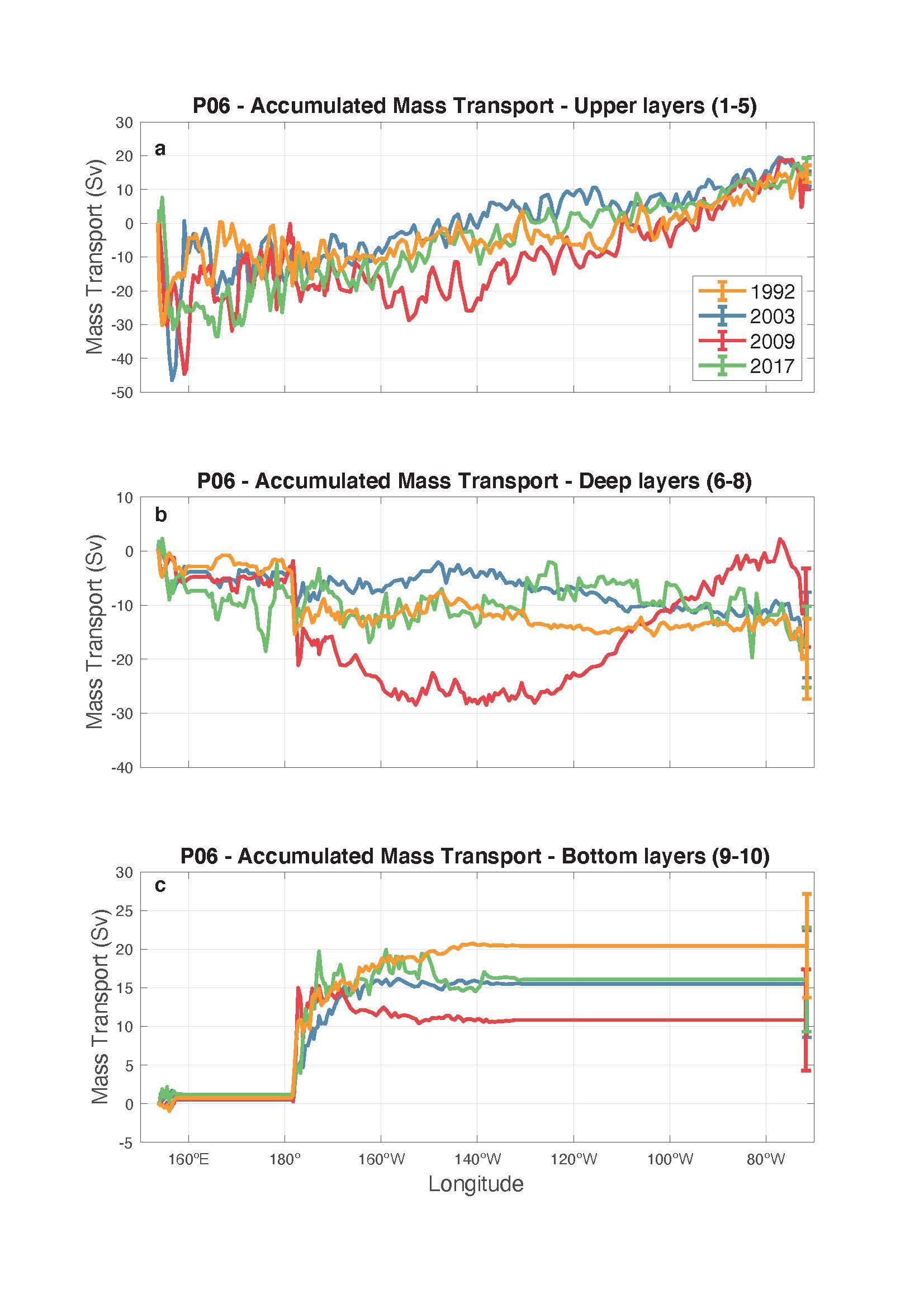Ph.D. Program in Oceanography and Global Change at the Canary Islands, Spain
The meridional circulation and transports at 32ºS in the Pacific Ocean in 1992 and in 2017 are compared with analogous data from 2003 and 2009 computed by Hernández-Guerra & Talley (2016). The hydrographic data come from the GO-SHIP database and an inverse box model has been applied with several constraints. In 1992, 2003 and 2017 the pattern of the overturning stream function is similar, but in 2009 the pattern of the circulation changes in the whole water column. The horizontal distribution of mass transports at all depths in 1992 and in 2017 changes notably from the “bowed gyre” found in 2009 and resembles that regular shape of the “classic gyre” in 2003. Furthermore, the East Australian Current transport increases from 1992 (-35.1 ± 2.0 Sv) to 2003 (-51.1 ± 2.0 Sv), and then decreases slightly in 2009 (-49.9 ± 2.1 Sv) and in 2017 (-39.2 ± 1.6 Sv). The Peru-Chile Current transport estimated in 1992 (4.4 ± 1.0 Sv) and in 2017 (4.4 ± 0.8 Sv) are slightly higher than in 2003 (3.3 ± 0.9 Sv) and in 2009 (3.8 ± 1.2 Sv). The Peru-Chile Undercurrent does not appear in 1992. However, it is estimated to have a mass transport of -1.5 ± 0.8 Sv in 2017, which is lower than in 2003 (-2.8 ± 1.2 Sv) and 2009 (-3.8 ± 1.2 Sv). Nevertheless, the heat transport in 2009 (0.16 ± 0.12 PW) is significantly lower than in 1992 (0.42 ± 0.12 PW), 2003 (0.38 ± 0.12 PW) and 2017 (0.42 ± 0.12 PW). The freshwater transport result in 2009 (0.50 ± 0.03 Sv) is significantly higher than in 1992 (0.26 ± 0.08 Sv), 2003 (0.25 ± 0.02 Sv) and 2017 (0.34 ± 0.08 Sv). Large-scale sea surface height variability at 30ºS in the South Pacific Ocean is investigated using satellite altimetry data of the past 27 years. To clarify the causes of these observed spatial varying signals, a linear Rossby wave model is adopted, which includes the wind-stress curl variability and the responses forced by sea surface height changes along 30ºS. A Rossby wave propagating westward is suggested to be responsible of the different circulation pattern in 2009.




